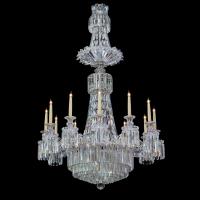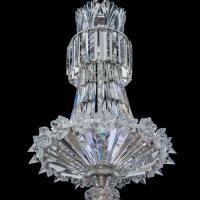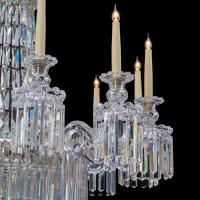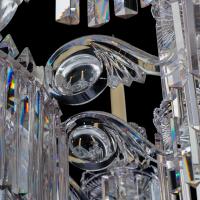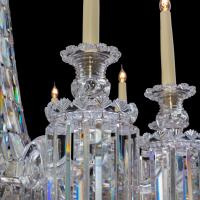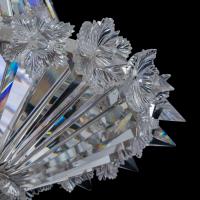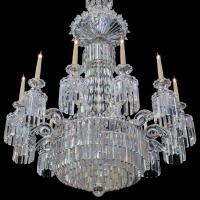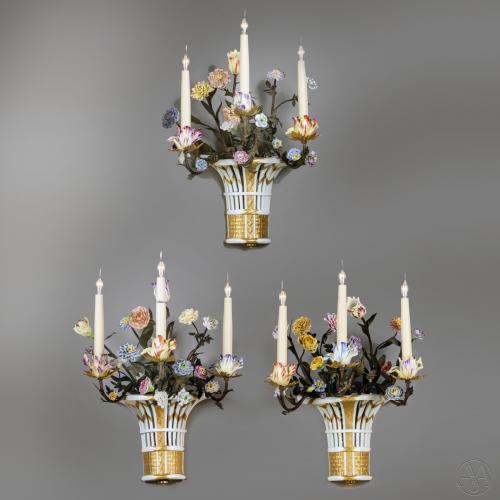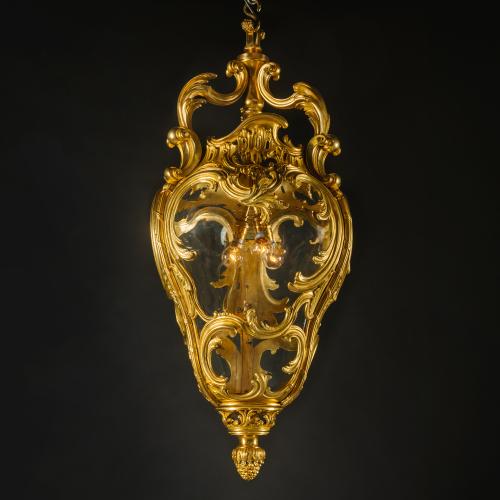
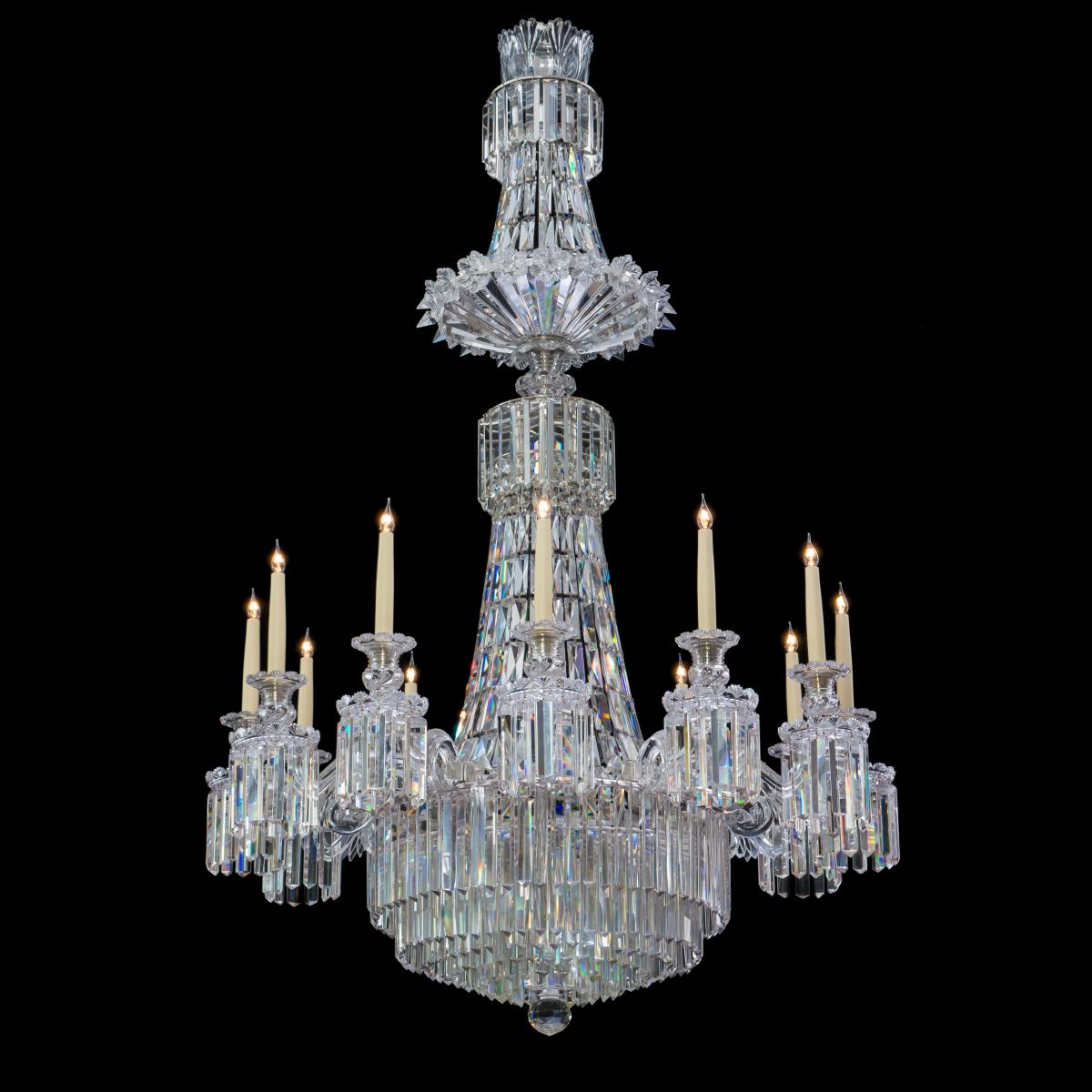
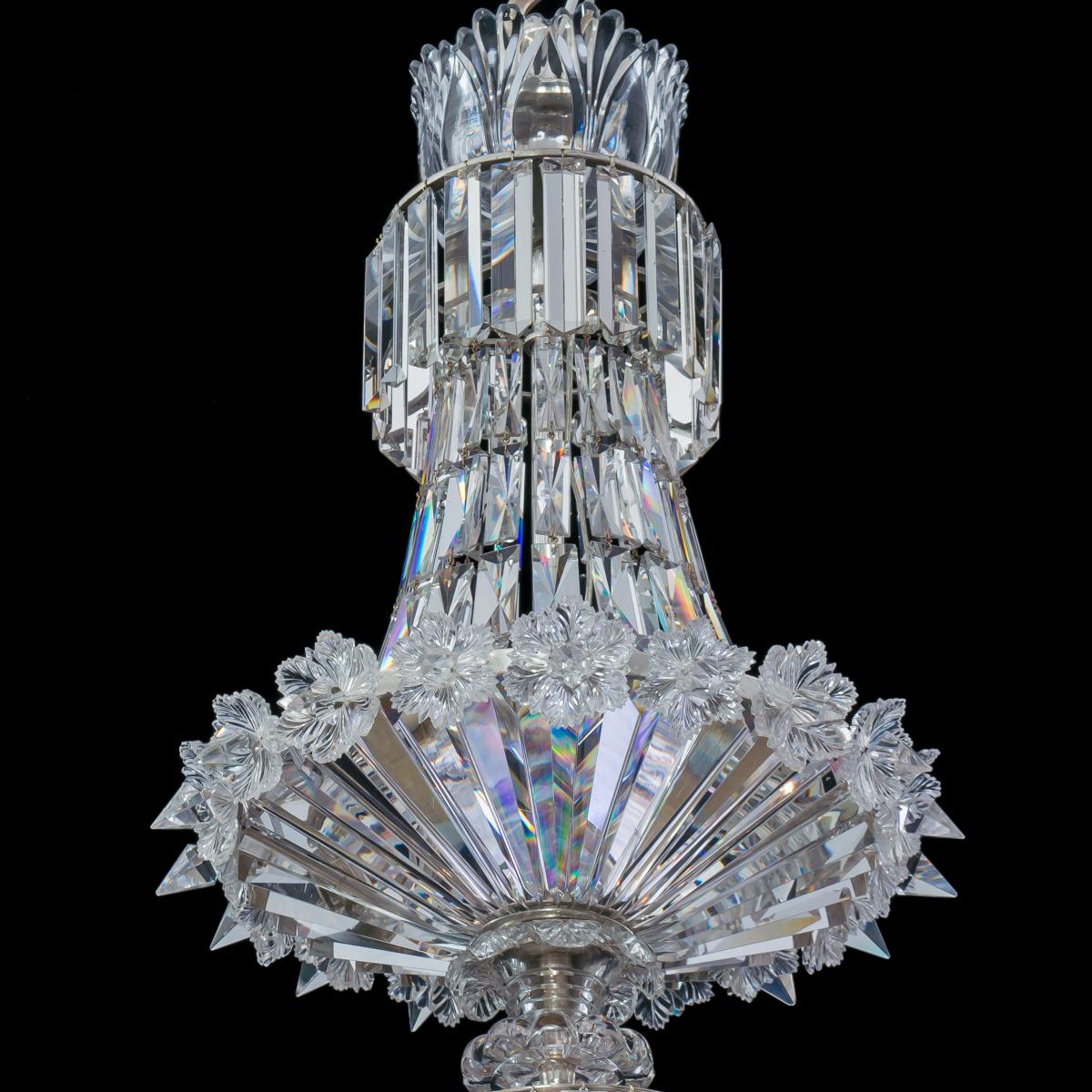
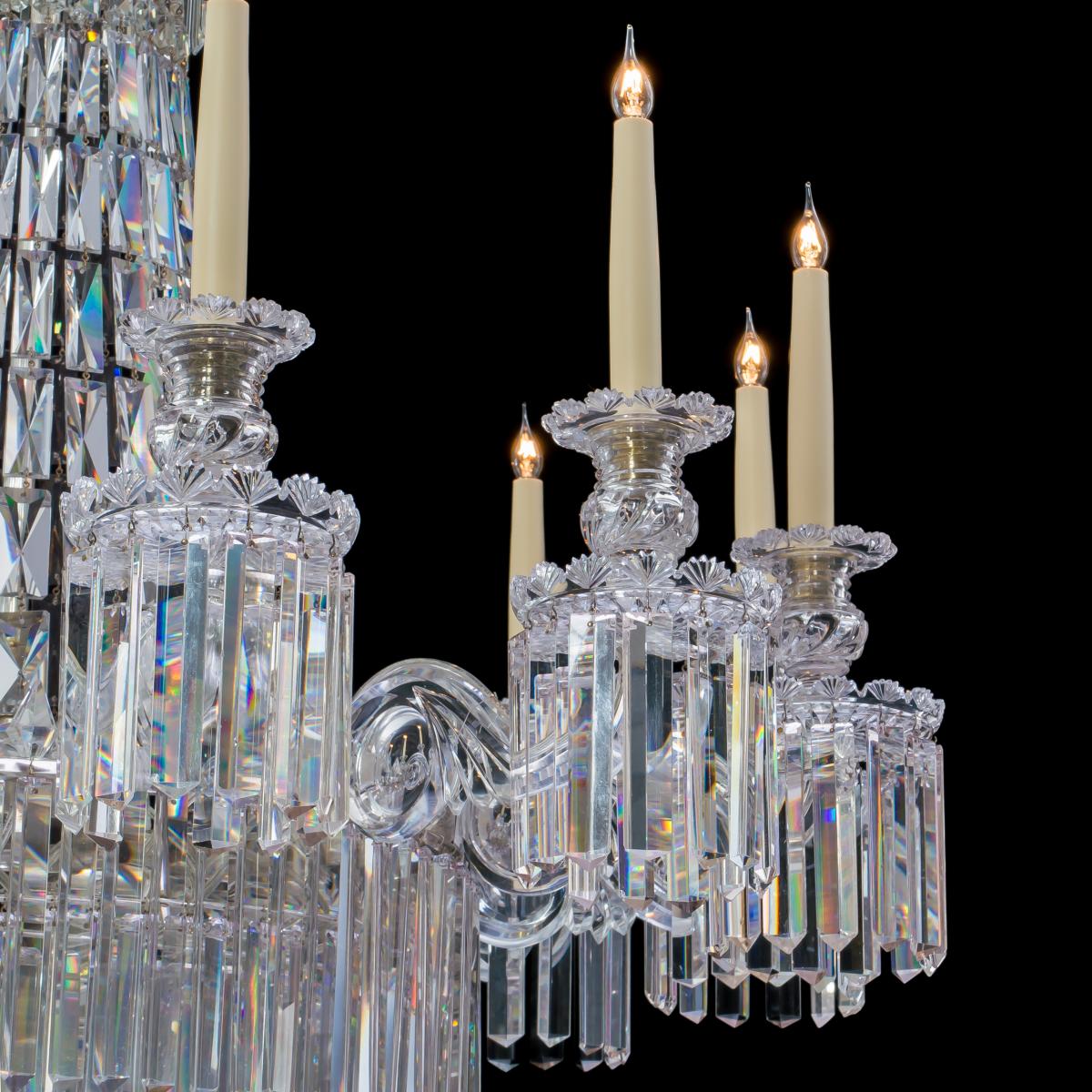
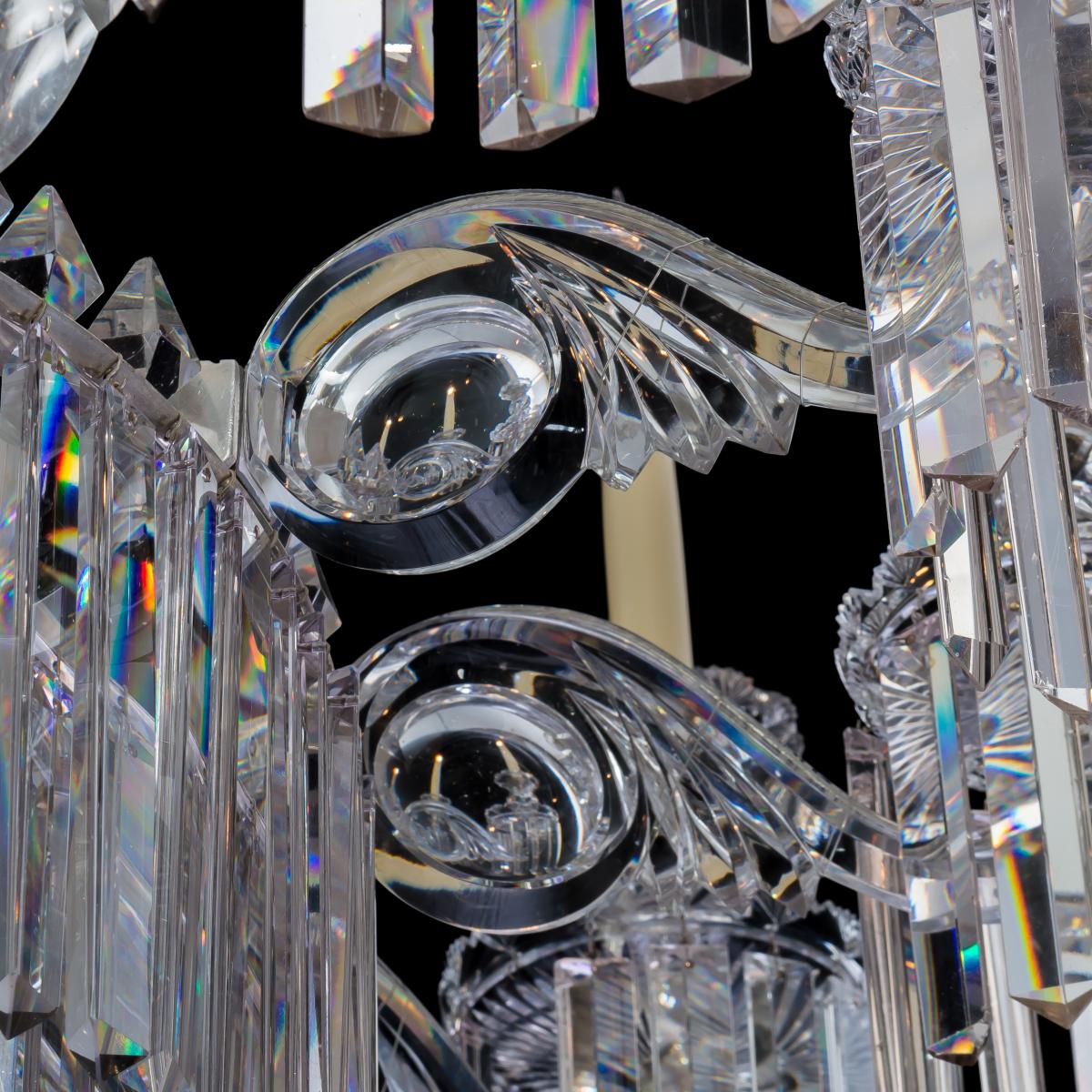
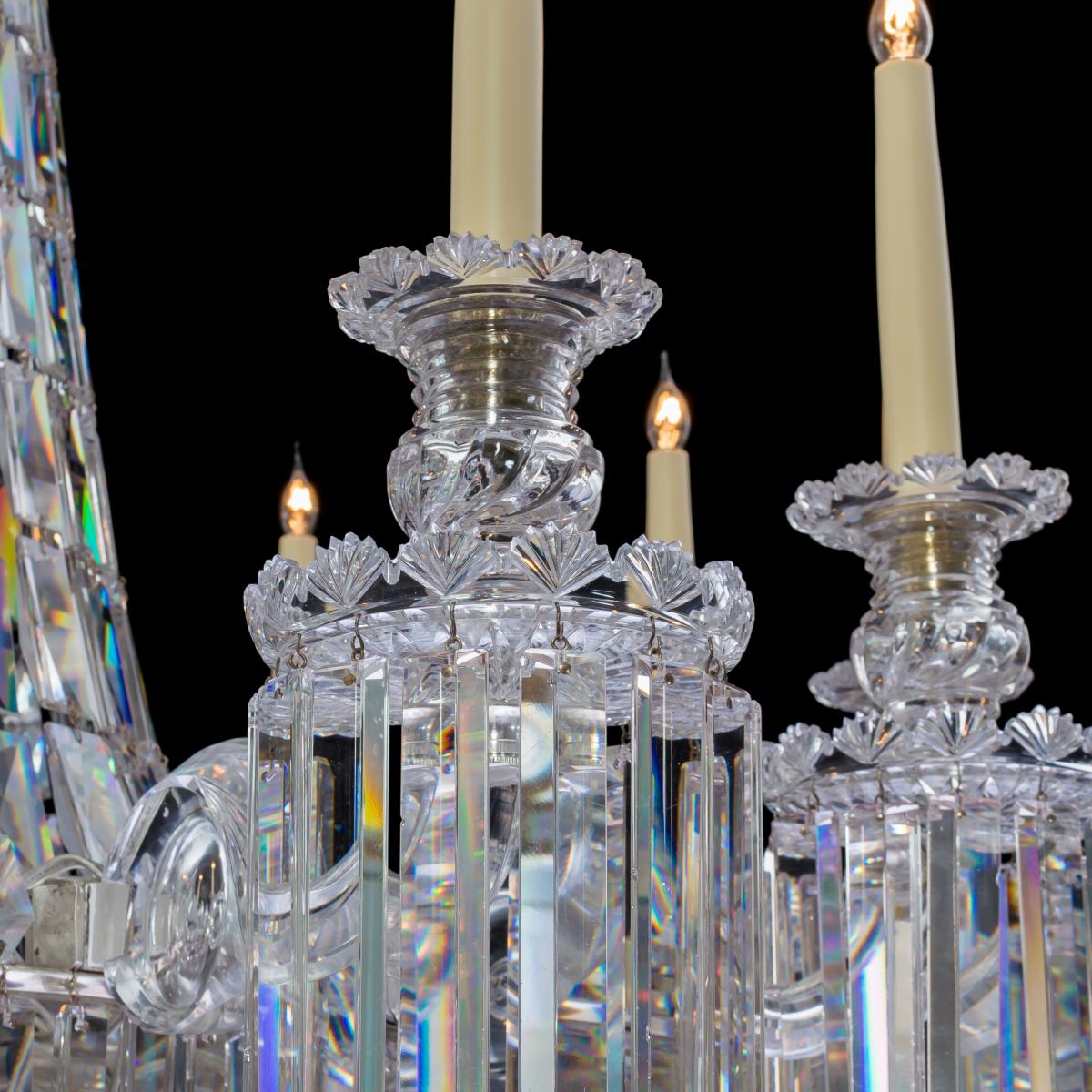
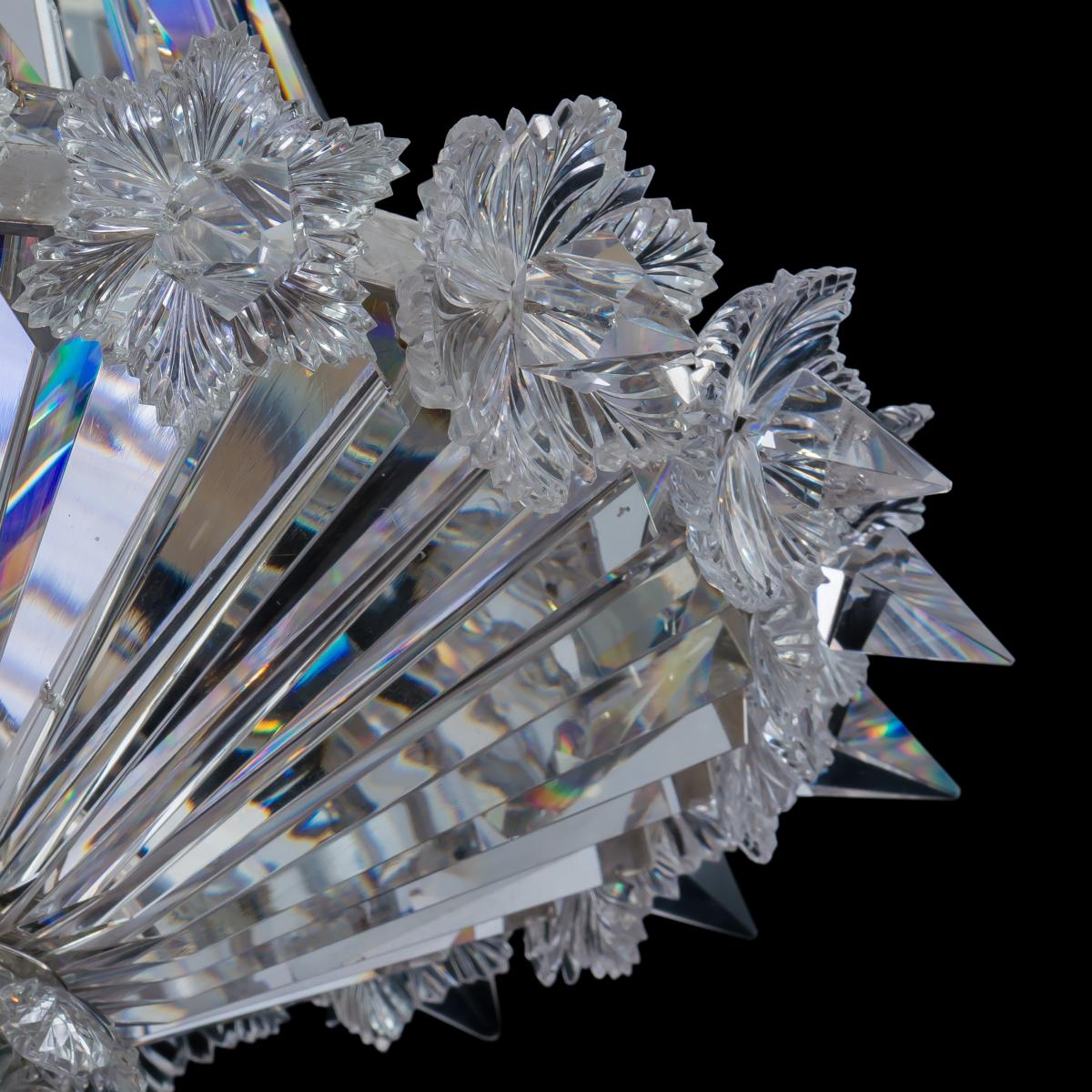
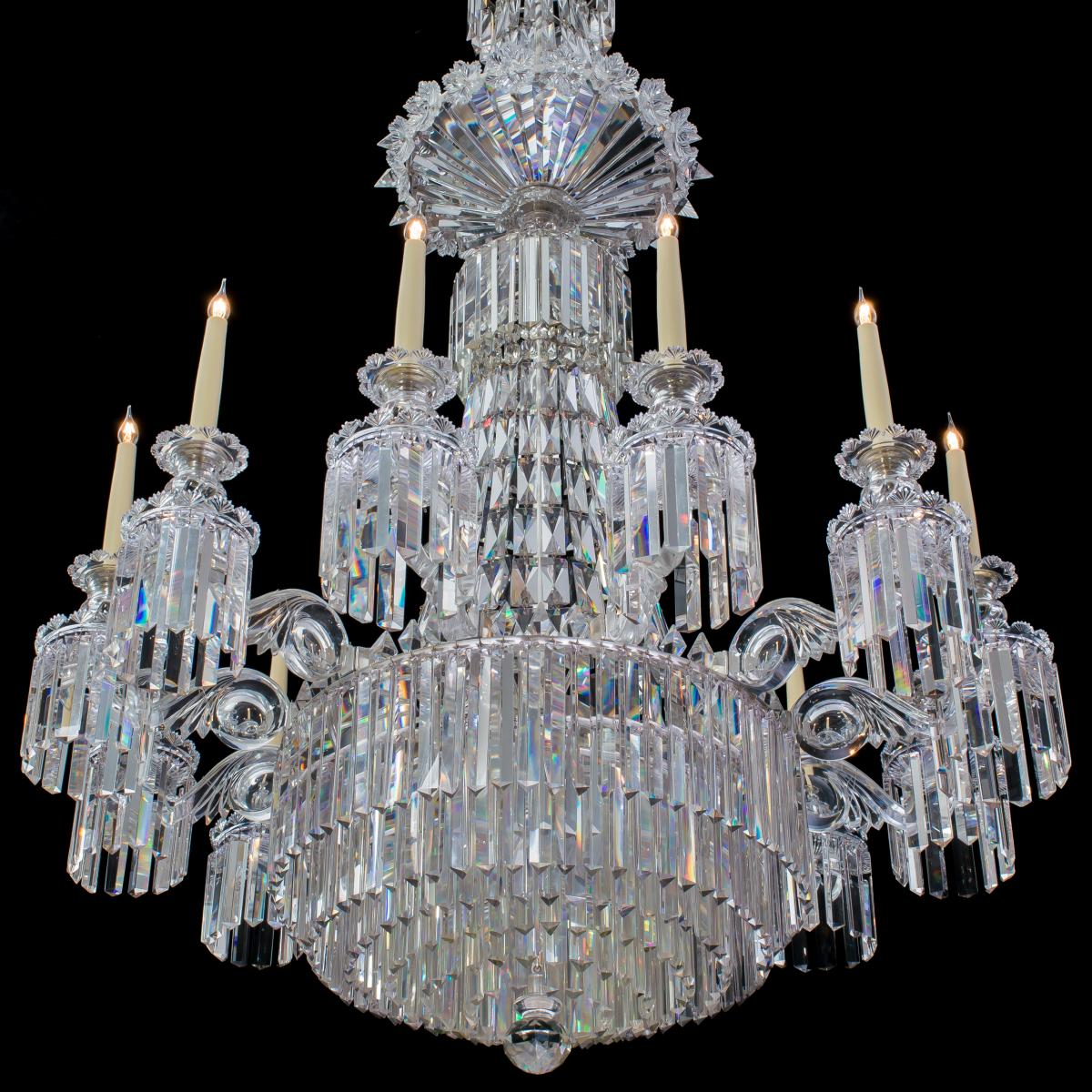
Price on application
This object is eligible for a Certificate of BADA Provenance
The BADA Standard
- Since 1918, BADA has been the leading association for the antiques and fine art trade
- Members are elected for their knowledge, integrity and quality of stock
- Our clients are protected by BADA’s code of conduct
- Our dealers’ membership is reviewed and renewed annually
- Bada.org is a non-profit site: clients deal directly with members and they pay no hidden fees
A Fine William IV Cut-Glass Twelve-Light Chandelier, Firmly Attributed to Perry & Co.
This magnificent chandelier relates to examples in the collection at Chatsworth House which were acquired by the 6th Duke of Devonshire for his London residence Devonshire House in the 1840s, notably for the Green Drawing Room and grand Salon. It is likely the firm also supplied a glass handrail, newel post and scrolled wall lights for the fabled ‘crystal staircase’ at the Mansion.
England, Circa 1840.
Perry & Co.
William Perry is first recorded in partnership with William Collins at 227 The Strand, London, then from 1803 he joined William Parker, as Parker and Perry. William Parker was the leading chandelier maker of the late eighteenth century, supplying fashionable households, and royalty, as far afield as the Emperor of China. Between 1783 and 1786 alone, Parker had supplied chandeliers costing over £2,500 to the Prince of Wales for his London residence, Carlton House.
Parker and Perry together were commissioned for a fifty-six light Chandelier for the Crimson Drawing Room in Carlton House at a cost of over £1,000. It was completed in 1808 and was fourteen feet high and six feet six inches in diameter. William Pyne, whose great work on the Royal Palaces was published in 1819, considered this chandelier to be one of the finest in Europe. Many of Parker and Perry's chandeliers were removed at the dismantling of Carlton House, and placed in Buckingham Palace where they remain today.
In 1817 William Perry went on to establish himself independently at 72 New Bond Street as 'Glass Manufacturer to the Prince Regent' (possibly wresting the appointment from Parker), and was joined in 1822 by his nephew. The company became George Perry & Co in 1833. It was to become one of the most sucessful manufacturers of its time.
Perry & Co. supplied the nine 'inverted parasol' chandeliers in the Music Room of the Royal Pavilion, Brighton, for the Prince Regent, at a cost of £4,290.12s. On the sale of the Royal Pavilion to the commissioners of Brighton in 1850 they were removed and taken to London. All but four, which remain in Buckingham Palace, were returned to the Pavilion in 1864.
Perry & Co produced a range of lighting fittings, all using the highest quality English cut-glass drops.
The Victoria and Albert Museum holds a book of sketches of 'classic' Perry chandeliers from the 1860's and 1870's, which are frequently annotated with the dates of the order and the names of those who had ordered them.
Bibliography:
Mortimer, Martin , The English Glass Chandelier, Antique Collectors Club, (Woodbridge, UK); 2000, p. 19.
Parrott Bacot, H. Nineteenth Century Lighting, Schiffer Publidhing, 1988.
Dimensions
Height : 167 cm 66 inches Diameter : 105 cm 41 inchesStock number
B75970The BADA Standard
- Since 1918, BADA has been the leading association for the antiques and fine art trade
- Members are elected for their knowledge, integrity and quality of stock
- Our clients are protected by BADA’s code of conduct
- Our dealers’ membership is reviewed and renewed annually
- Bada.org is a non-profit site: clients deal directly with members and they pay no hidden fees


